Home Office Windows: Location and Ways to Cover Them
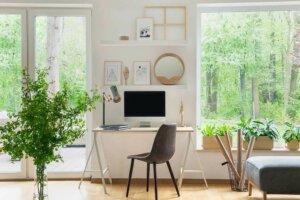
The work-at-home modality became inevitable with the arrival of COVID-19 and it seems that it’ll be here to stay. So we’ll bring you some tips to help you take advantage of the windows within the space that you’ve defined as your home office.
If at this precise moment you’re working in an area with little access to natural light, it’s better that you restructure your space. Do this in order to take advantage of the benefits of this type of lighting. According to a report concerning a sample of school-aged children who take their classes in classrooms with natural light, this factor affects cognitive performance.
Furthermore, another study identified that exposure to sunlight, which influences the synthesis process of vitamin D, can help prevent Parkinson’s disease. As you can see, this is a theme that transcends the borders of decor to offer bigger benefits related to your health.
Home office windows and their location
Below, we’ll present some recommendations on how your home office and desk space could be located with respect to the windows. Choose the location that best suits your space and your tastes.
Side windows
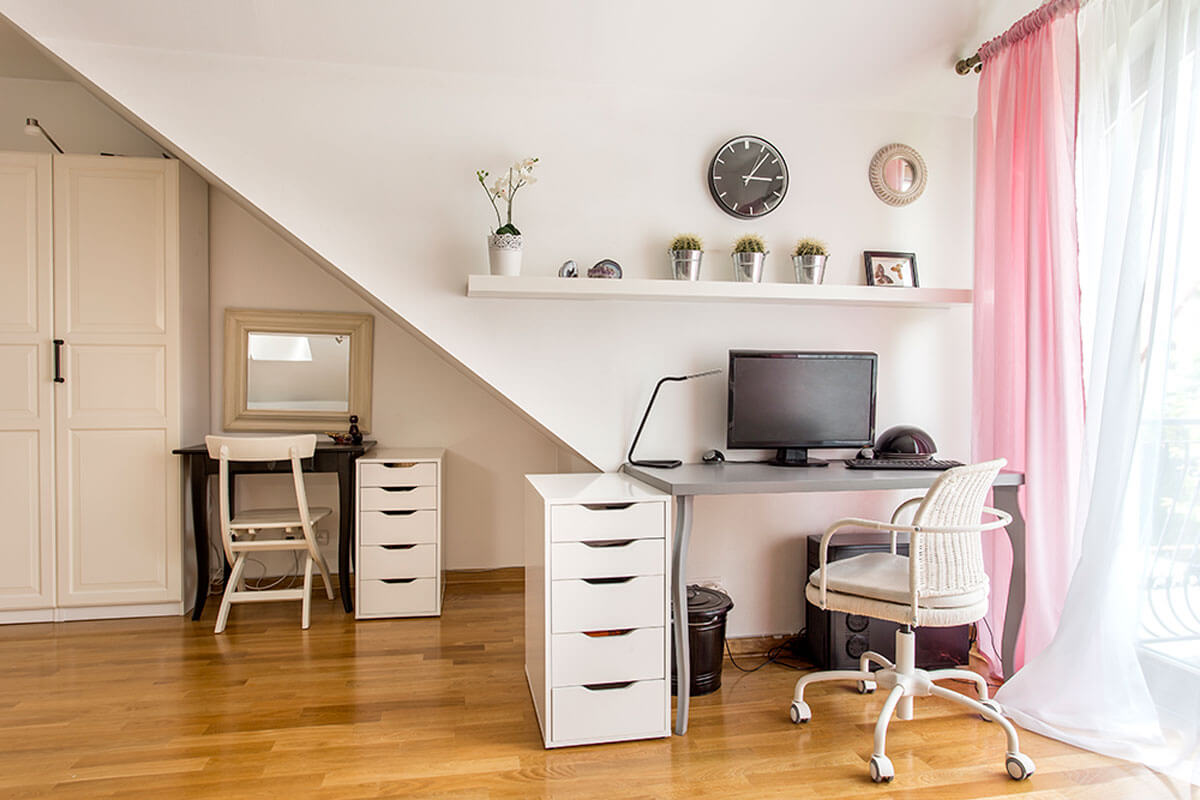
Identify your window and install the desk so that the light enters from the side. If you’re right-handed, allow light to enter from the left side. If you are left-handed, let the light enter from the right. In this way, you’ll notice that when you write, no shadows are formed and the computer screen won’t display any shine.
Front or rear
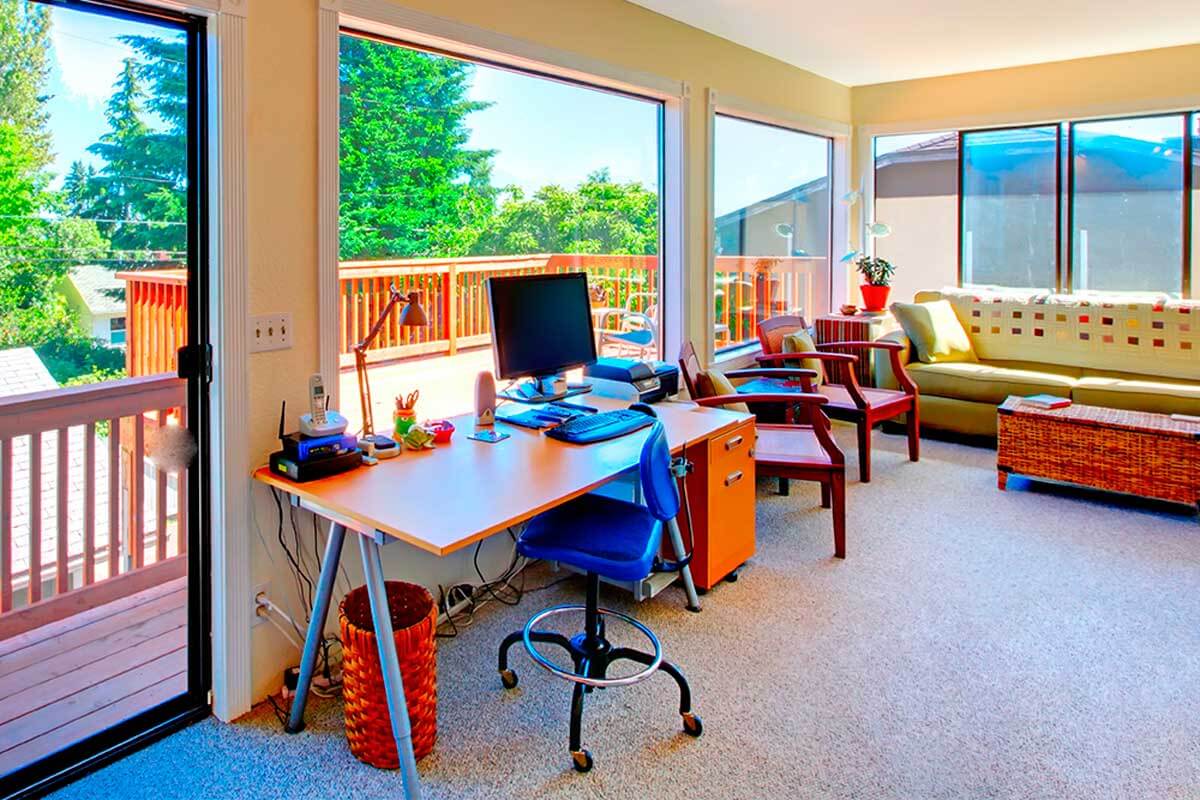
If you’re tired of looking up from your computer and facing the wall, it’s best to place your office facing the window, so you can observe the view and receive more natural light. Now, if you enjoy the perspective of space in your office, leave the window behind you.
These locations also have their downsides. If sunlight enters directly through the window, at a certain time of day they may cast shadows on the computer or intense rays may fall on the screen. If that’s a problem for you, try placing the desk in the center.
How to cover home office windows?
Although it’s very important to have access to natural light during some hours of the day, it’s also necessary to cover them and control the light. Here are a couple of ideas.
Use blinds
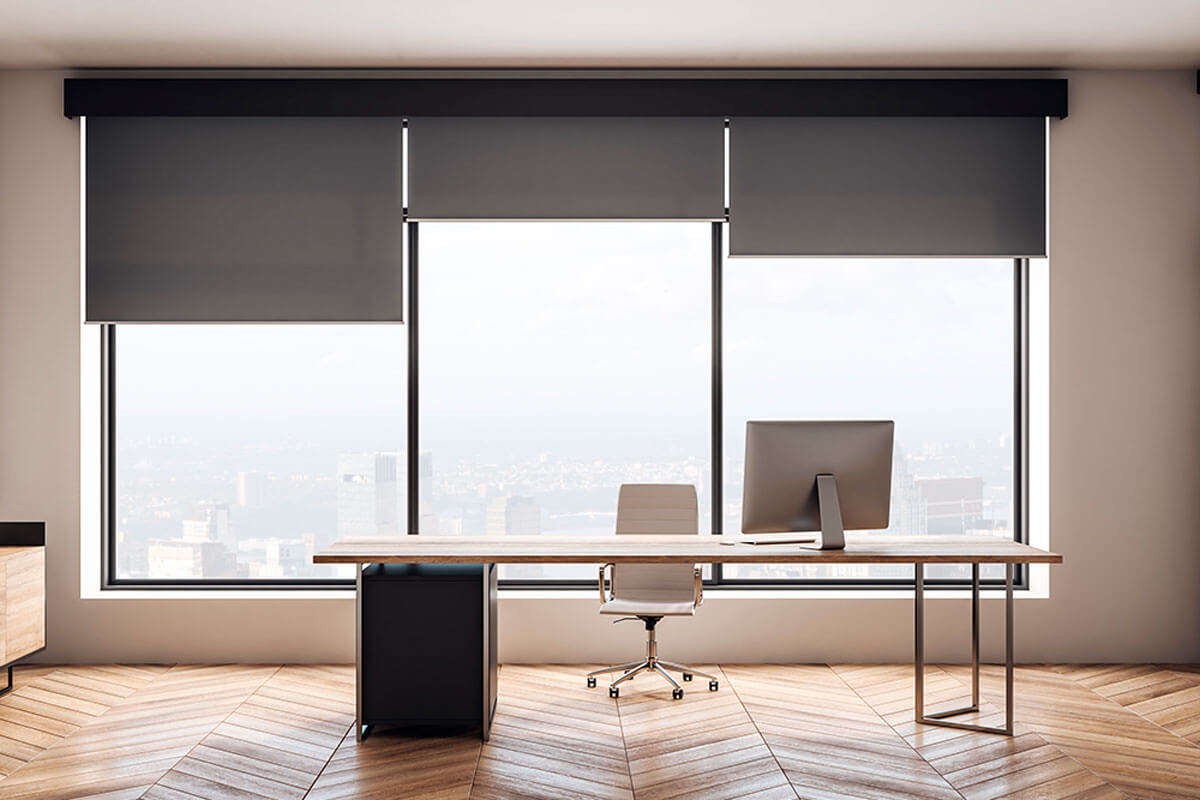
Blinds are one of the most popular options because they’re stylish, practical, and provide a true office feel. We find different types, such as:
- Rollable: these are practical because you can adjust the height to let in the amount of light you want.
- Rod: blinds hung from a rod means you can choose the height, but a strip is always visible.
Regardless of which option you choose, also check the fabric. This regulates the entry of light and heat, in addition to providing privacy by not allowing us to be seen from the outside. Translucent blinds let the light through very well, but can expose us.
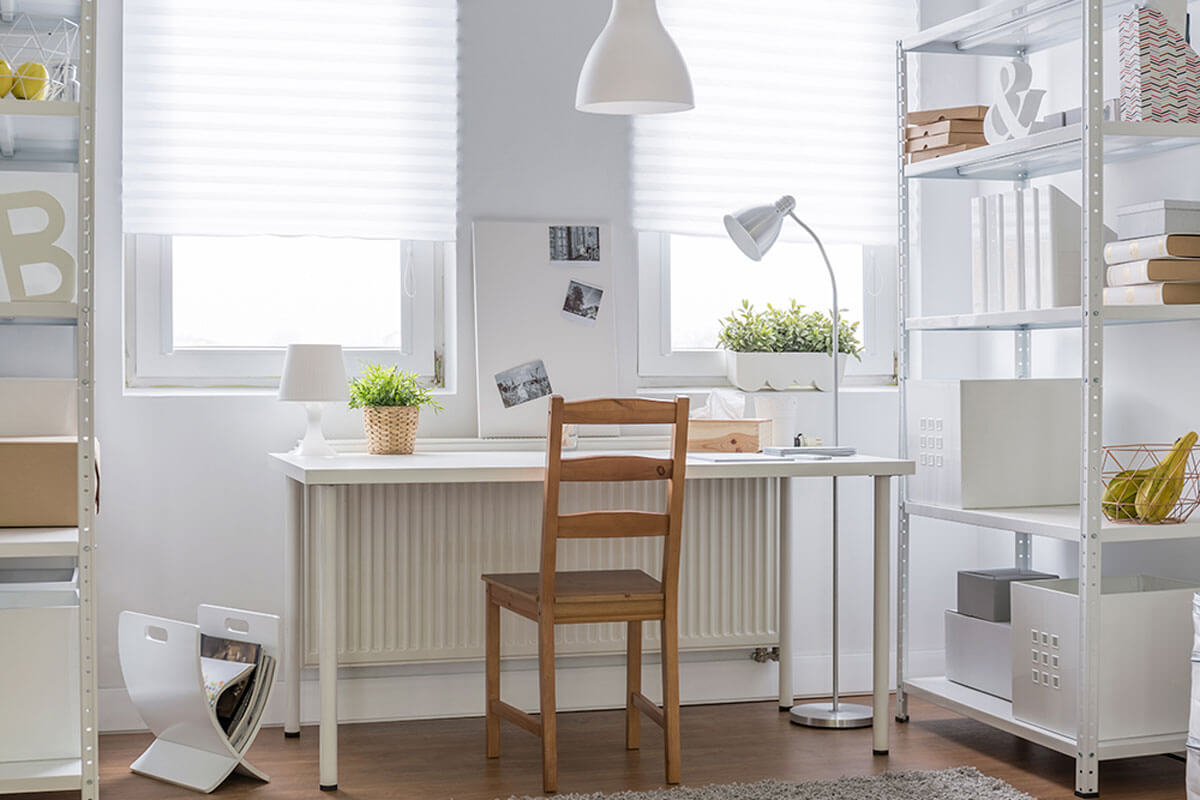
As we’ve seen, blinds are a good option, because they allow control of light and air. Those that are used for night and day have inclinations that allow us to work without being exposed, while allowing natural light to enter.
Some also have horizontal and vertical slats. You can adapt them to your liking, either from floor to ceiling or the precise size of your window. In addition, you can find them in wood, vinyl, PVC and metal. Choose the type that best suits your decoration.
Curtains
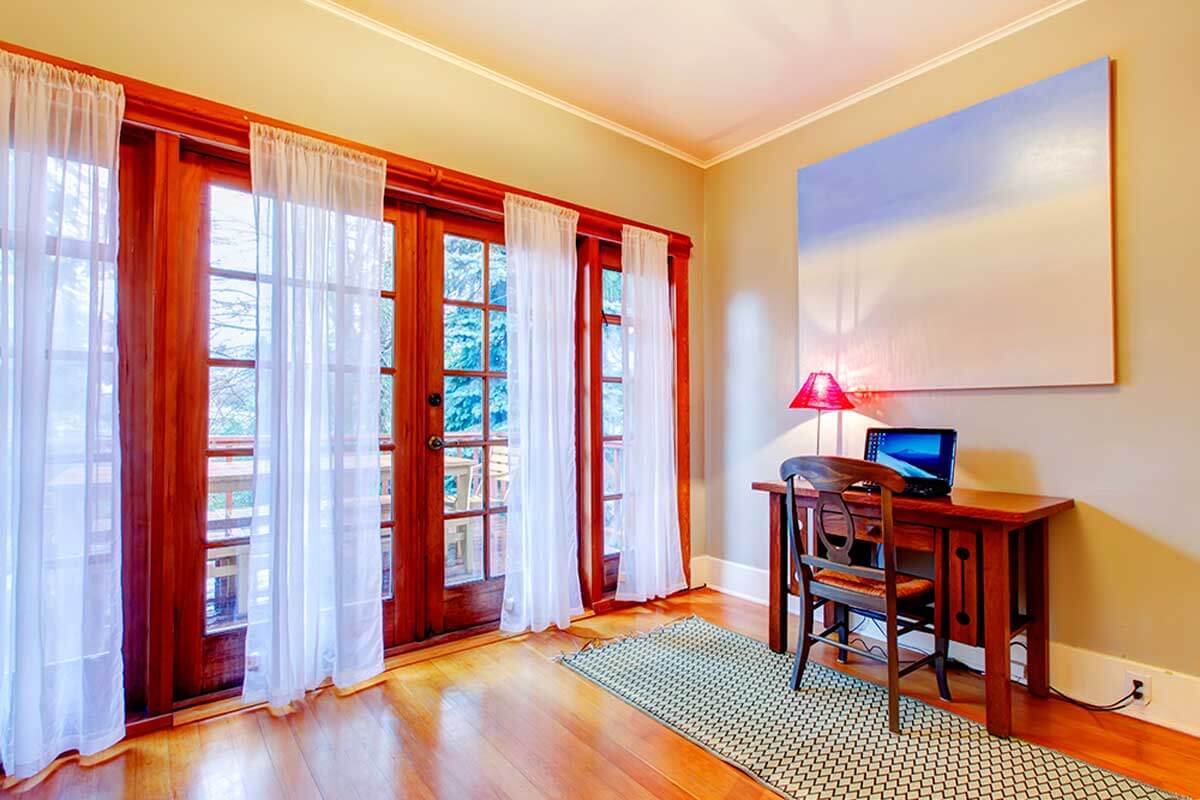
Another option is curtains, there are also different types, some are translucent and allow the entry of light and air without major problem, others are heavier and interrupt the entry of light. The good thing about curtains is that there are so many options. You can easily find any style according to your taste and liking.
Give importance to your home office windows!
If your home office already gives relevance to the windows that surround it, perfect! If not, don’t wait any longer to reorganize and restructure. In addition to enhancing the decorative objects of your workspace, the natural light that enters through your windows will bring you huge benefits.
The work-at-home modality became inevitable with the arrival of COVID-19 and it seems that it’ll be here to stay. So we’ll bring you some tips to help you take advantage of the windows within the space that you’ve defined as your home office.
If at this precise moment you’re working in an area with little access to natural light, it’s better that you restructure your space. Do this in order to take advantage of the benefits of this type of lighting. According to a report concerning a sample of school-aged children who take their classes in classrooms with natural light, this factor affects cognitive performance.
Furthermore, another study identified that exposure to sunlight, which influences the synthesis process of vitamin D, can help prevent Parkinson’s disease. As you can see, this is a theme that transcends the borders of decor to offer bigger benefits related to your health.
Home office windows and their location
Below, we’ll present some recommendations on how your home office and desk space could be located with respect to the windows. Choose the location that best suits your space and your tastes.
Side windows

Identify your window and install the desk so that the light enters from the side. If you’re right-handed, allow light to enter from the left side. If you are left-handed, let the light enter from the right. In this way, you’ll notice that when you write, no shadows are formed and the computer screen won’t display any shine.
Front or rear

If you’re tired of looking up from your computer and facing the wall, it’s best to place your office facing the window, so you can observe the view and receive more natural light. Now, if you enjoy the perspective of space in your office, leave the window behind you.
These locations also have their downsides. If sunlight enters directly through the window, at a certain time of day they may cast shadows on the computer or intense rays may fall on the screen. If that’s a problem for you, try placing the desk in the center.
How to cover home office windows?
Although it’s very important to have access to natural light during some hours of the day, it’s also necessary to cover them and control the light. Here are a couple of ideas.
Use blinds

Blinds are one of the most popular options because they’re stylish, practical, and provide a true office feel. We find different types, such as:
- Rollable: these are practical because you can adjust the height to let in the amount of light you want.
- Rod: blinds hung from a rod means you can choose the height, but a strip is always visible.
Regardless of which option you choose, also check the fabric. This regulates the entry of light and heat, in addition to providing privacy by not allowing us to be seen from the outside. Translucent blinds let the light through very well, but can expose us.

As we’ve seen, blinds are a good option, because they allow control of light and air. Those that are used for night and day have inclinations that allow us to work without being exposed, while allowing natural light to enter.
Some also have horizontal and vertical slats. You can adapt them to your liking, either from floor to ceiling or the precise size of your window. In addition, you can find them in wood, vinyl, PVC and metal. Choose the type that best suits your decoration.
Curtains

Another option is curtains, there are also different types, some are translucent and allow the entry of light and air without major problem, others are heavier and interrupt the entry of light. The good thing about curtains is that there are so many options. You can easily find any style according to your taste and liking.
Give importance to your home office windows!
If your home office already gives relevance to the windows that surround it, perfect! If not, don’t wait any longer to reorganize and restructure. In addition to enhancing the decorative objects of your workspace, the natural light that enters through your windows will bring you huge benefits.
All cited sources were thoroughly reviewed by our team to ensure their quality, reliability, currency, and validity. The bibliography of this article was considered reliable and of academic or scientific accuracy.
- Shishegar, Nastaran & Boubekri, M.. (2016). Natural Light and Productivity: Analyzing the Impacts of Daylighting on Students’ and Workers’ Health and Alertness.
- Zhou Z, Zhou R, Zhang Z, Li K. The Association Between Vitamin D Status, Vitamin D Supplementation, Sunlight Exposure, and Parkinson’s Disease: A Systematic Review and Meta-Analysis. Med Sci Monit. 2019 Jan 23;25:666-674. doi: 10.12659/MSM.912840. PMID: 30672512; PMCID: PMC6352758.







